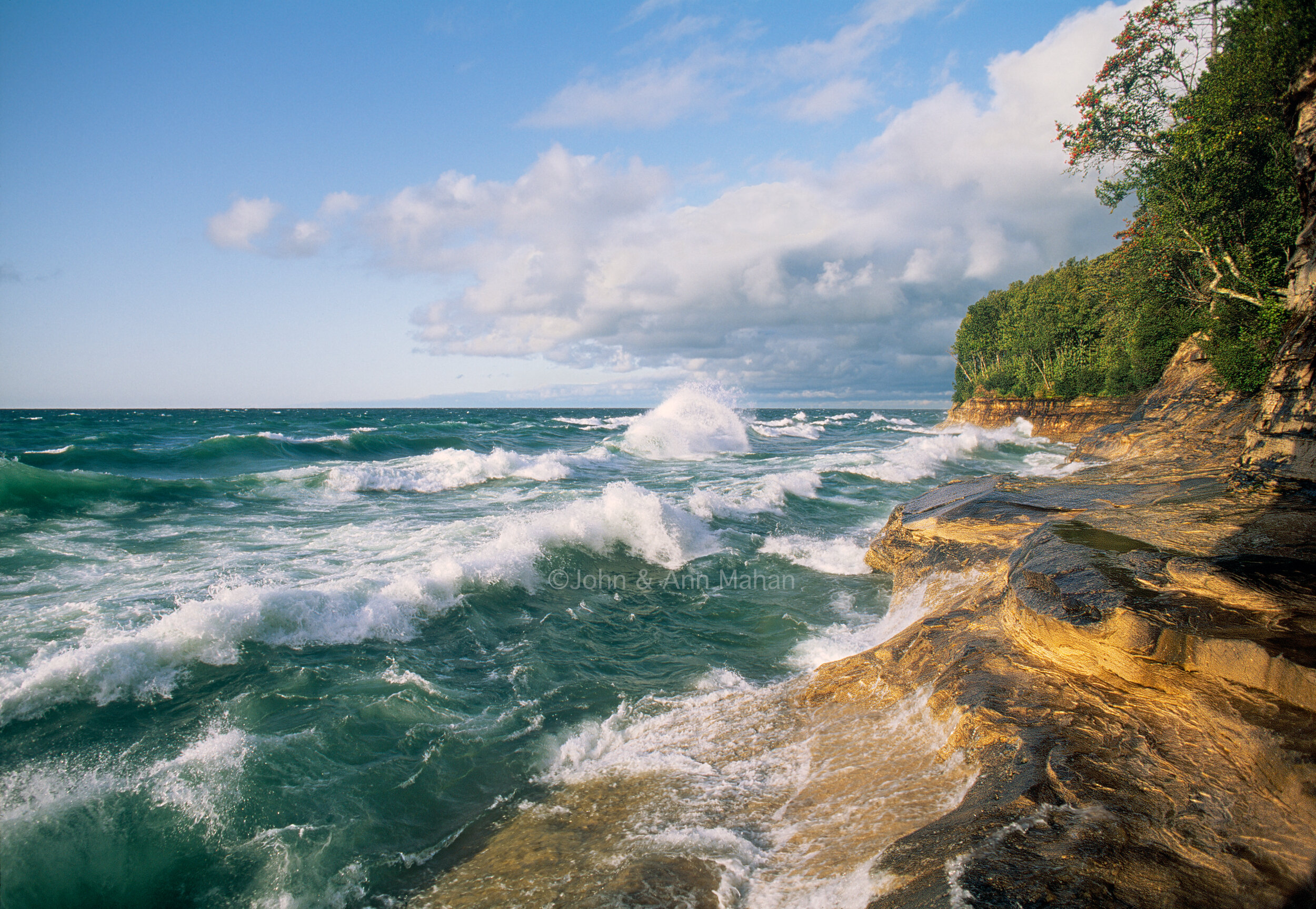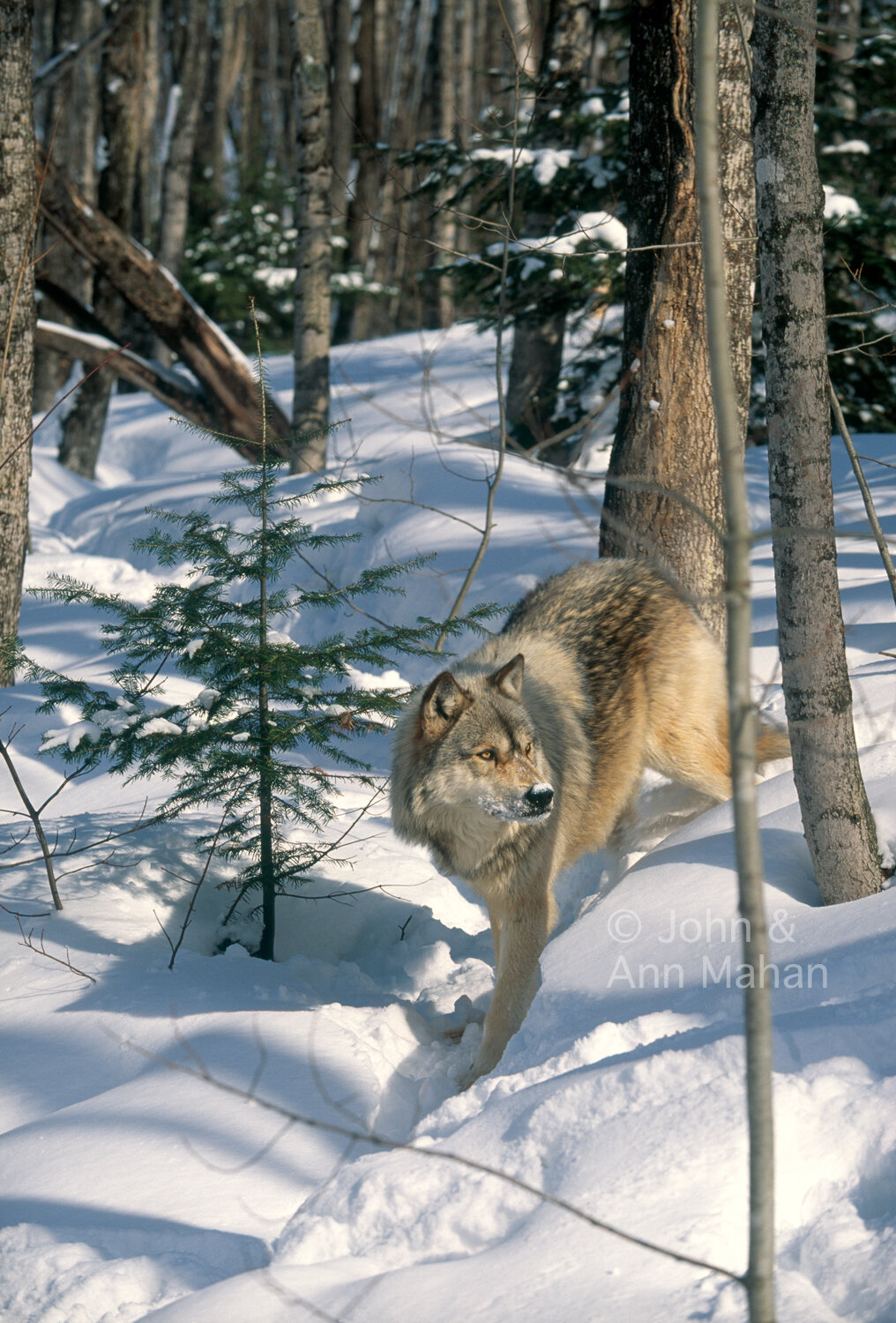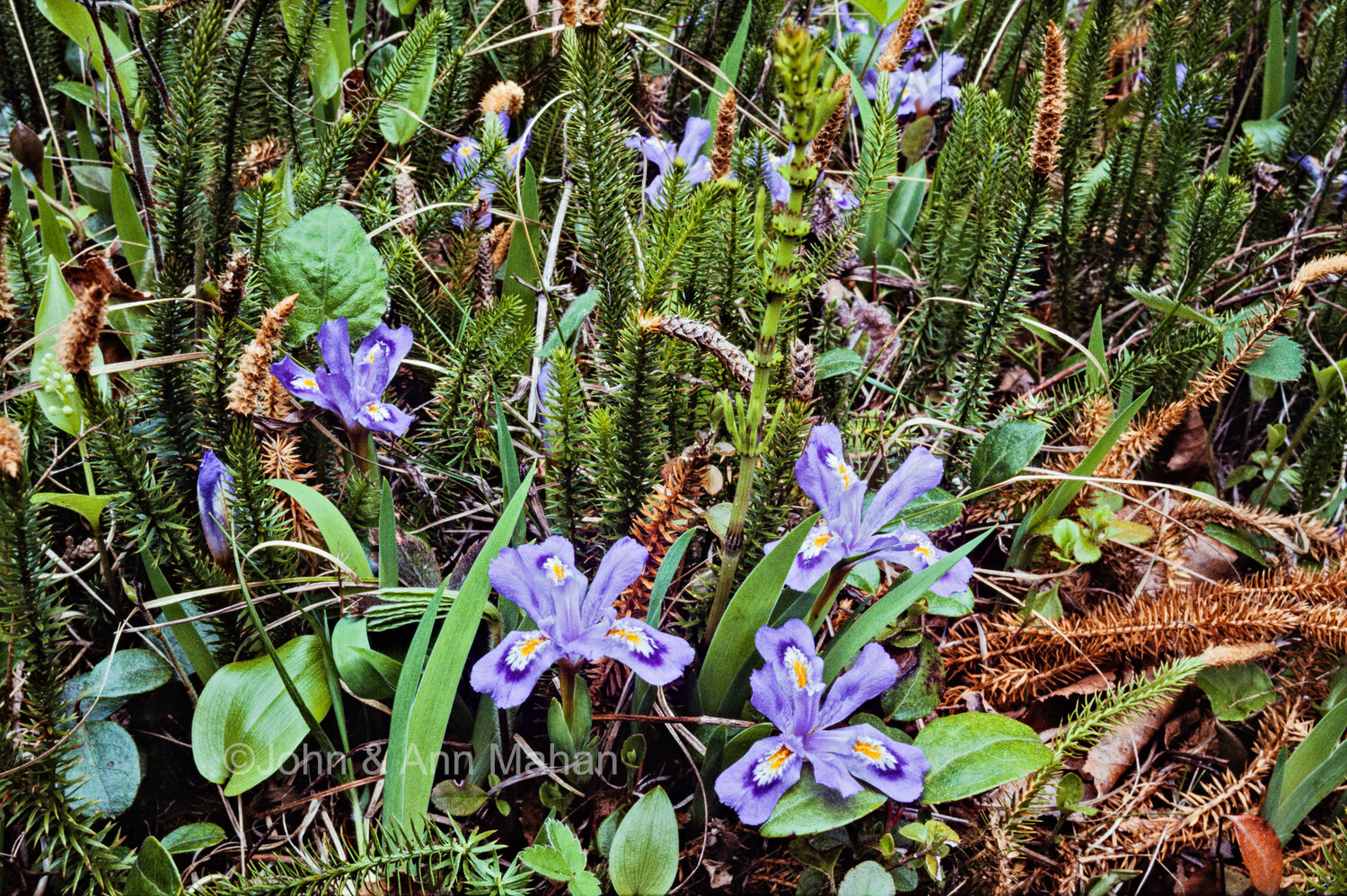
"That's not a lake, that's an ocean!" —
a common response when first viewing the open horizon of a Great Lake.
Did you know?
There are 5 vast inland seas in the heart of the North American continent, holding 20% of the world's freshwater: Lake Superior, Lake Michigan, Lake Huron, Lake Erie, Lake Ontario.
The Great Lakes include the largest freshwater lake in the world by surface area (Lake Superior), and the longest stretch of freshwater dunes on Earth (Lake Michigan).
Sleeping Bear Dunes, Lake Michigan
The world's largest concentration of lighthouses is in the Great Lakes (more than 200 on the United States coastline).
Split Rock Lighthouse -- Lake Superior
Wolves, moose, and elk wander the wilds of the upper lakes region.
The Great Lakes ecosystem sustains many rare species, including: the largest concentration in the world of globally rare ram's-head lady's slipper orchids; the dwarf lake iris, known to exist only at the northern ends of Lake Michigan and Lake Huron; and the globally rare lake sturgeon.
Wolf in Michigan's U.P.
Bull Moose at Lake Superior Shore
Ram's-head Lady's Slippers
Dwarf Lake Iris
Soo Locks
More ship traffic passes through the Soo Locks (between Lake Superior and Lake Huron) than through the Suez Canal.
A freighter traveling from a European port to Duluth, Minnesota (at the western end of Lake Superior) travels about the same distance through the St. Lawrence Seaway and the Great Lakes as it did in its transatlantic crossing.
The lakes experience a Lilliputian tide, but seiches have been known to wash people off piers, and tear boats from their moorings.
Lake Michigan storm — St. Joseph North Pier Lights
Great Lakes maritime history is as rich as that of the oceans.
“I have seen the storms of the Channel, those of the Ocean, the squalls off the banks of Newfoundland, those on the coasts of America, and the hurricanes on the Gulf of Mexico. No where have I witnessed the fury of the elements comparable to that found on this fresh water sea.” — Francis Count de Castelnau, 1842, writing of a Lake Michigan storm.
Nearly 3 billion year old metamorphic rock at Oiseau Point, Lake Superior
Some of the most ancient bedrock on the planet cradles portions of the Great Lakes — approaching 3 billion years in age.
At the north end of Lake Superior, Earth's crust is still recovering from the last glaciation, rising in some areas at a rate faster than that of any active North American mountain range.
The Great Lakes region has a long and unique history of providing groundbreaking ecological research and applying that understanding to human activity in the ecosystem.
The concepts of ecosystem management and Virtual Elimination of persistent toxic substances by Zero Discharge of human inputs were born in the Great Lakes area and formally committed to by the U.S. and Canadian governments.










